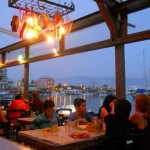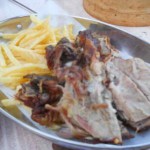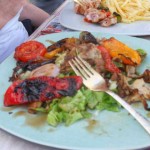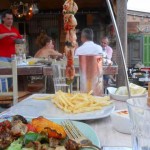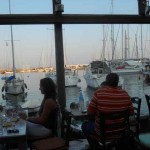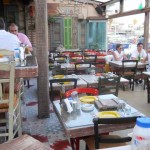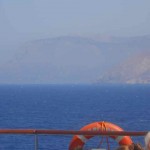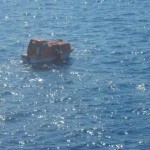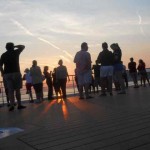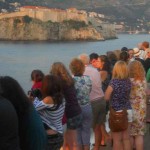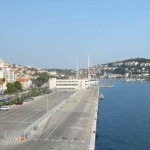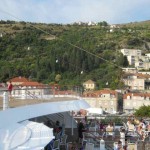OK, first, a confession. I’m not a big fan of antiquities. I love a beautiful building, a beautiful city, beautiful art…. But the fact that it was accomplished 1000 years ago is really only interesting to me in that I wonder what we need to do today to organize ourselves in such a way that we make beautiful things.
Athens is a sore spot inside my shoe. The culture here created truly magnificent architecture and art 1000 years ago. But Athens the city of 2010 is bland apartment houses stacked and stacked. There are many empty buildings and the city is not clean. There is no Ramblas here. The climate is hard for me. Dry and hot. And we are headed to Egypt and Morocco!
BUT, the temples at the Acropolis are wonders. You have to squint to see what they were when freshly built. Greece is helping by filling in the gaps between the recovered pieces with fresh white marble. You get some idea of what it must have looked like when it was freshly carved.
The Acropolis is a place. A high hill (a rock really) upon which were built many important and beautiful buildings. Akros = edge, Polis = city, Acropolis was the edge of the city.
The 5th century B.C. was the peak the Greek glory. The major temples of the Acropolis were built in the first half of that century. Late in that century the Persians sacked Athens. After they were repelled, the Peloponnesian war, where Greek states vied for dominance. A weakened Greece became a Roman province by the 2nd century A.D. Then, 1000 years pass and we come to the 4th Crusade, when “Latin” Christians sacked Constantinople and the Eastern Roman Empire collapsed. Wait a couple of hundred years and the Ottoman Turks successfully invade. The Venetians invade in 1687. A successful war for independence in the 1820’s created modern Greece.
Many of the invaders did damage to the temples at the Acropolis, some more than others. The Turks built a gunpowder magazine there and during the Venetian invasion the Parthenon was hit by artillery fire and blew up! It’s a wonder there is anything left to look at. The crusaders tore a hole in the middle of the Parthenon to build a cathedral there. The Turks turned it into a Mosque and added a minaret.
English Lord Elgin stole (Greek opinion), removed (English opinion), many marble carvings from the Acropolis which now reside in the British Museum.
Greece is fighting to get these cultural artifacts back. The two poles of the arguments about return of antiquities were described aboard in a lecture by law professor Nancy Burkoff. Internationalism (they are “world” treasures and it’s OK if someone removed them if they can better “protect” them and make them available to the public and scholars)… and Nationalism (our culture developed them, they belong to us, and they can best be understood in their original context).
We were able to visit the New Acropolis Museum. It sits a stone’s throw from the Acropolis with large glass walls allowing you to see the Parthenon outside while looking at ancient marble sculptures inside. It was built in part to answer the British position that the marbles taken by Lord Elgin would be better preserved in the British Museum than in Greece. Now Athens says “here is our modern museum, built and ready, spaces already reserved for the returned pieces…”.
We head off-ship at 12ish, and get onto a tour bus and head to our first stop the Olympic stadium where the “modern” Olympic games were begun. Looks a lot like the Harvard stadium right? Then on to the Acropolis. Except for the heat I would have wanted to linger. And then, back to the ship.
-
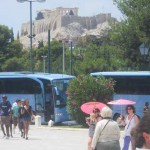
-
And across the street, up on that hill…
-
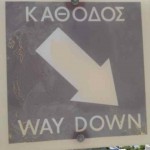
-
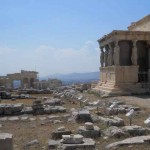
-
The Porch of the Caryatids
-
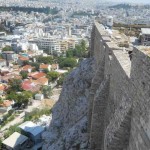
-
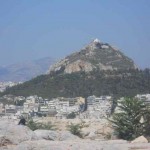
-
View of Lykavittos Hill from the Acropolis
-
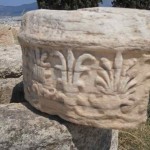
-
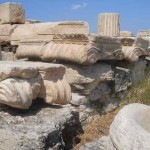
-
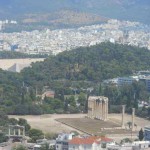
-
View of Athens
-
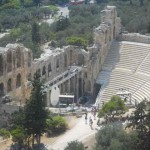
-
Theatre of Herod Atticus
-
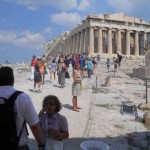
-
The Parthenon
-
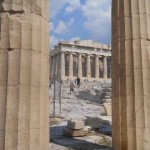
-
The Parthenon from the Propylaia
-
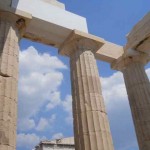
-
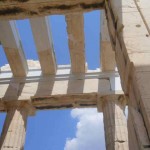
-
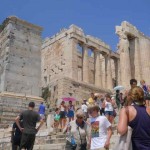
-
The Propylaia
-
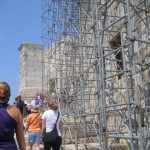
-
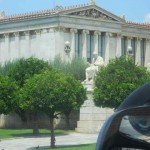
-
Neoclassical
-
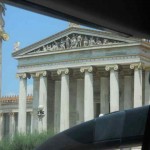
-
The Institute of Arts and Letters
-
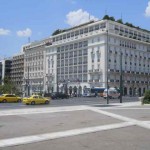
-
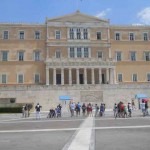
-
The parliment building
-
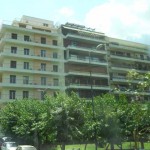
-
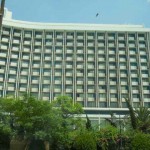
-
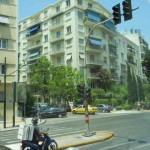
-
More bus views
-
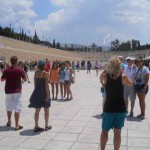
-
The Olympic Stadium
-
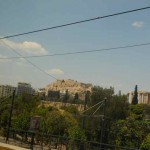
-
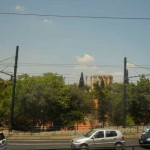
-
And then you see columns!
-

-
“Julia” pics all over town. Internet gambling.
-
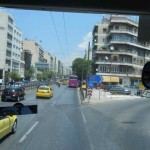
-
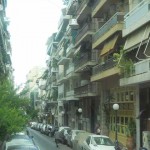
-
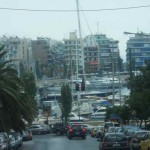
-
Bus ride from ship


